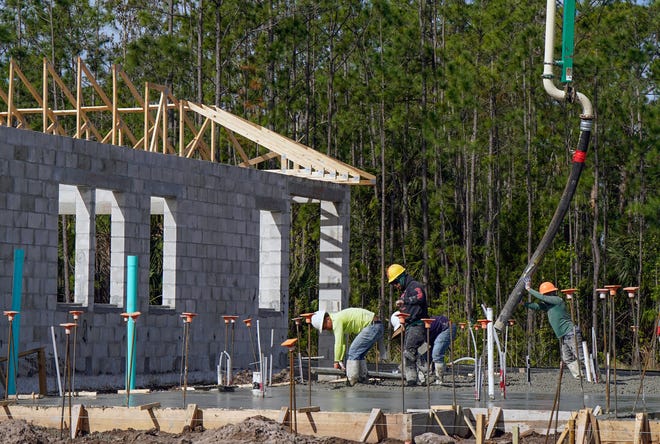
A landmark settlement in an antitrust challenge to the National Association of Realtors’ standards for real estate agent commissions has understandably been celebrated as a victory for homebuyers. At around 5.5%, average commissions in the United States are some of the highest in the world, and if the NAR settlement results in lower commissions (and if sellers, who typically pay the fees, incorporate the savings into their listing price), prospective homebuyers could save thousands of dollars.
Any such savings would be welcomed, and for good reason. But homebuyers shouldn’t expect fundamental changes to the brutal U.S. housing market.
First, it’s unclear just how much they’ll benefit from the settlement because it doesn’t address the other, and arguably bigger, anticompetitive facet of the U.S. real estate agent market: occupational licensing regulations.
All states require real estate brokers to obtain a license, and 44 states license real estate salespeople (who must work for a licensed broker). In many states, this system creates a high barrier to entry into the profession and severely limits competition.
Colorado, for example, demands 168 hours of education from a state-approved real estate school (or college equivalent), passage of the state licensing exam, fingerprinting and background check, a sponsoring broker, errors and omissions insurance and $485 broker licensing fee. All told, the process can take more than a year to complete and cost more than $1,000. Once licensed, brokers must annually complete another 24 hours of continuing education at a substantial additional expense.
Licensing leads to higher costs for consumers
Research has consistently found that by limiting competition, occupational licenses like these increase consumer costs while providing few, if any, benefits in terms of quality, health or safety. For home buyers and sellers, this probably means paying higher commissions for no good reason.

Consider, for example, the United Kingdom, which doesn’t license real estate agents and enjoys average commissions of just 1.3%. Even after this month’s settlement, U.S. homebuyers can only dream of such rates.
In a free market, providers should be able to offer any service at whatever price they want, and if consumers don’t like it, a competing provider can – and almost certainly will – offer it for less. But this is no free market. And until state laws that create local real estate cartels are reformed or eliminated, we should expect commissions to remain higher than they’d otherwise be.
How much should it cost to sell a house?Your real estate agent may be charging too much.
Even then, however, homebuyers wouldn’t be spared from the most important problem in the U.S. real estate market today: home prices and rents increasing at a pace that far exceeds overall inflation. That trend has nothing to do with cartels or commissions and almost everything to do with the limited supply of housing, particularly in high-growth metro areas.
Building more homes will slow price increases
Research has repeatedly shown that the most effective check on skyrocketing home prices is simply to build more homes. One survey of the literature found that new construction of market-rate units in several U.S. cities moderated the prices of all typesof nearby housing, both high- and low-priced.
Housing shortage squeezes budgets:Rising home prices create an enormous burden. So why aren’t we building more houses?
Recent experience shows much the same: places that have seen housing construction at rates above national or regional averages – Austin, Phoenix, Atlanta, Raleigh, Minneapolis and more – have enjoyed slower rent and home price appreciation.
Unfortunately, regulation is a big problem here too, severely restricting the construction of market-rate housing across the country and thus boosting prices. The biggest impediments, studies show, are local zoning and land use regulations that dictate home sizes, yard sizes, parking and more, while giving politicians and residents an effective veto over anything that might deviate from these strict terms.
The restrictions’ effect on prices is significant: One recent study examined 24 different metropolitan areas and calculated a “zoning tax” of up to $500,000 per quarter-acre in cities with onerous land-use regimes – a finding consistent with previous research.
In case after case, in the U.S. and abroad, the lesson is always the same: new housing supply lowers prices; land use regulation discourages new supply; and homebuyers suffer as a result.
Other policies do further damage. Federal tariffs on construction materials, hard caps on immigration, high local permitting and building fees, and property and other taxes increase American homebuilders’ costs and thus discourage the construction of smaller starter homes with lower profit margins. National housing subsidies and city building codes preference traditional, “stick-built” homes over less expensive manufactured housing. And the U.S. government’s ownership of large amounts of land, particularly in the West, makes it unavailable for development and acts as hard barrier to the expansion of neighboring localities.
Combine state-sanctioned Realtor cartels with a witches’ brew of federal, state and local regulation, and it’s no surprise that home prices are skyrocketing today. Unfortunately, there’s no settlement amount that will change this troubling reality.
Scott Lincicome is vice president of general economics and trade at the Cato Institute.

